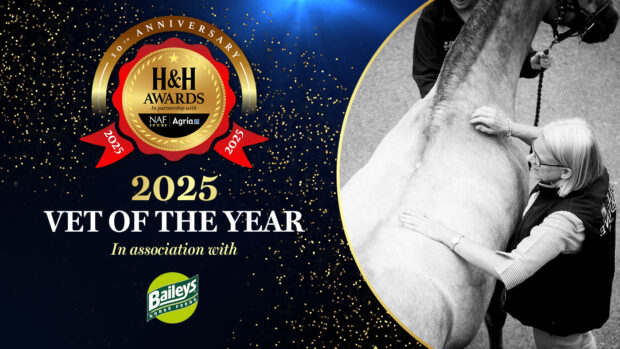Q: “I’m worried that my boy might be developing a bit of laminitis. He’s 19 and never suffered before but yesterday when I asked for trot he was slightly lame. I could feel a slight pulse in his left fore. I’ve never had to deal with laminitis before. He did seem a bit tentative to pick up his feet when I got off to check for any stones lodged from the walk up to the ménage but he is sound in walk.I have my farrier coming out this afternoon to have a look before I call out a vet but I’ve left him in on a deep bed with half a slice of soaked hay. He’s grazed on a smaller paddock to control his weight anyway as he gets fat off thin air. He has also been coming back into work since I’ve come home from university so it’s not like he’s been left with no work. It’s all come on so suddenly. Is there anything else I can do to control this? Or how to continue to prevent it? How long does he have to be out of work for and when will I know if it has cleared up?”
A: Laminitis is a huge topic, however I will try and break it up into three sections:
1. Causal factors of laminitis
2. Prevention
3. Management of the laminitic horse/pony
1. Causal factors
Every horse owner knows that, if you feed too much, your horse can get fat and subsequently get laminitis. In addition, concussion-based bouts of laminitis, or even toxic laminitis, are frequently reported. However, as you have already alluded to, a huge amount of clients are presented with laminitis in horses that ‘live on fresh air’. So what’s going on?
Hormone/metabolic instability can be a significant contributing factor in all cases. These can be split into two main categories:
a) Cushing’s Syndrome: It is well documented that horses suffering from Cushing’s are more predisposed to bouts of laminitis; this is easily diagnosed and monitored by measuring a hormone called adrenocorticotrophic hormone (ACTH) and managed with medication known as Prascend (active ingredient Pergolide). I would strongly recommend any animal suffering from even a suspicious episode of laminitis is tested for Cushing’s Syndrome.
b) Metabolic Syndrome: Obesity and insulin dysregulation is another huge causal factor. Commonly described as ‘metabolic syndrome’, our understanding of how a large number of inflammatory mediators and hormones affect fat deposition, utilisation and subsequent sugar metabolism, which then impact on the laminae within the horse’s feet, is ever evolving. At present, we only measure insulin, or hormones such as adiponectin, which we know are part of the metabolic process but this just tells us there is a dysregulation of the normal process of fat metabolism.
Continued below…
Related articles:
- H&H forum: find out what H&H readers suggested
- Laminitis in horses: recognising the signs
- Feeding a horse prone to laminits
2. Prevention
Eliminating or controlling the predisposing factors such as Cushing’s and/or Metabolic Syndrome is essential in the prevention of laminitis. However, dietary control, weight management and exercise remain the cornerstones of laminitis prevention.
3. Management
In response to your question, I always advise 7 days’ box rest for every day an animal is acutely lame. I combine this with a careful evaluation of the horse’s nutritional intake. High fibre, low sugar diets are the mainstay dietary therapy for all laminitics. In addition, I insist patients are kept on box rest with a deep bed (which is extended up to the door). Acute laminitics may also benefit from additional solar (foot) support in the form of pads or Imprint shoes. All patients with the condition need adequate pain relief; furthermore some vasodilating drugs may also be beneficial in the very early stages. I always feel it is beneficial to have radiographs of the feet; this enables us to help with giving a prognosis, in addition to being essential for your farrier in the subsequent management of the condition.
I never advise returning to normal turnout or work until the horse is no longer painful to the application of hoof testers, can comfortably walk on a tight ‘figure of eight’ circle and the predisposing factors have been investigated.
Laminitis can be a very debilitating condition and our understanding and management has not changed significantly in the last few years. However, some of the latest research may be changing the way we think about laminitis.
In people there are known links between obesity and type II diabetes. As I stated earlier, horses do not get the classical type II diabetes like people, however insulin dysregulation is apparent. There is now increasing evidence in people to suggest that gut bacteria may also play a role in obesity and insulin control. With horses being heavily reliant on their gut bacteria this is an avenue we are pursuing within our practice to see if stabilisation of the gut bacteria can help with obesity and the direct link between metabolic syndrome and laminitis.
If ever you are suspicious of laminitis in your horse, call your vet; early diagnosis and treatment can make a significant difference to the horse’s outcome.



